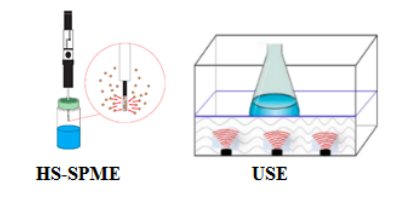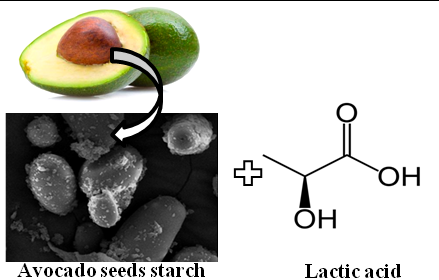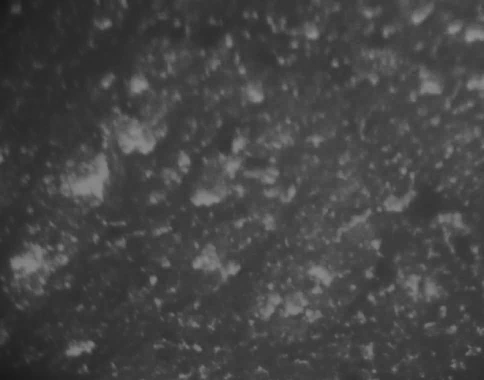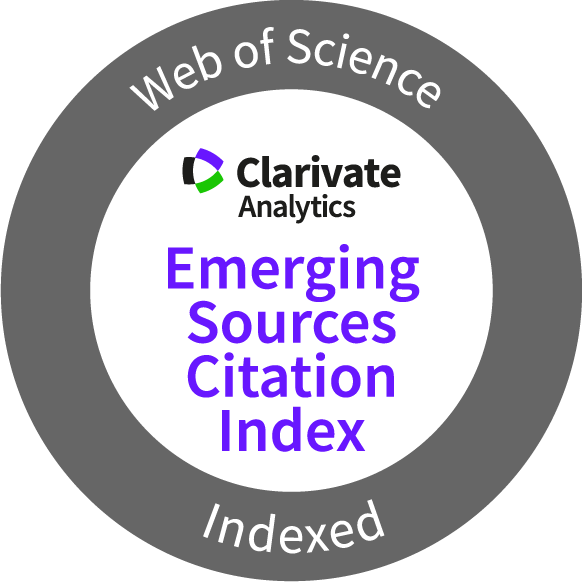Chemistry Journal of Moldova
Food chemistry
Author(s):
Field: Food chemistry
Type: Research paper
Issue: 2024 Volume 19, no.2
Pages: 16-27
Diana Crucirescu
Field: Food chemistry
Type: Research paper
Issue: 2024 Volume 19, no.2
Pages: 16-27
Full Text (PDF): Download
https://doi.org/10.19261/cjm.2024.1244
Abstract (PDF)
Graphycal Abstract: Apples of the Coredana, Golden Rezistent, Reglindis and Rewena varieties were studied. The quantitative and qualitative determination of organic acids and carbohydrates were using HPLC and CE methods. Determination of AA and TPC content was evaluated by spectrophotometric methods. The highest amount of organic acids was obtained in the 45th DAFB of harvest, the predominant being malic acid (15.09-21.64 g/100gDW). Sugars had the highest value in 97th DAFB, fructose being the main one (67.79-75.73 g/L). TPC and AA showed maximum values at the beginning of fruit harvesting, having 916.67-1316.13 mgGAE/100gDW and 16.94-23.51 mgAAE/100gDW, respectively. Unripe apples represent a natural source of organic acids and carbohydrates, significant amounts of polyphenolic compounds with antioxidant properties.

Downloads: 99
Author(s):
Field: Food chemistry
Type: Research paper
Issue: 2023 Volume 18, no.1
Pages: 61-69
Ani Radonić and Marina Zekić
Field: Food chemistry
Type: Research paper
Issue: 2023 Volume 18, no.1
Pages: 61-69
Full Text (PDF): Download
Abstract (PDF)
Graphical Abstract: The aim of this study was to determine the volatile compounds of Croatian cheeses in a sack of lamb skin produced from either raw cow's or goat's milk and relate them to the aroma of these traditional cheeses. Cheese extracts were obtained by headspace solid-phase microextraction and ultrasonic solvent extraction and analysed by gas chromatography-mass spectrometry.

Graphical Abstract: The aim of this study was to determine the volatile compounds of Croatian cheeses in a sack of lamb skin produced from either raw cow's or goat's milk and relate them to the aroma of these traditional cheeses. Cheese extracts were obtained by headspace solid-phase microextraction and ultrasonic solvent extraction and analysed by gas chromatography-mass spectrometry.

Downloads: 251
Author(s):
Field: Food chemistry
Type: Research paper
Issue: 2023 Volume 18, no.1
Pages: 52-60
Andra Tamas, Sabina Nitu, Simona Popa, Mirabela Padure
Field: Food chemistry
Type: Research paper
Issue: 2023 Volume 18, no.1
Pages: 52-60
Full Text (PDF): Download
Abstract (PDF)
Graphical Abstract: It was studied the rheological behavior of mayonnaise prepared from fresh/frozen yolks, whit oily phase made up of mixtures of oils, taking into account the freezing time of the yolk, the ratio between the oils, as well as the storage time. It was found that the mayonnaises prepared from frozen egg yolks and those with an oily phase in which sesame oil is predominant, have a higher consistency. The oxidation stability was evaluated by determining the acid values, which increase slightly with the freezing time of the egg yolk and with the amount of sesame oil in the oily phase. Also, were carried out studies in CIELAB color space.
Downloads: 116
Author(s):
Field: Food chemistry
Type: Research paper
Issue: 2022 Volume 17, no.2
Pages: 50-61
Angela Gurev, Veronica Dragancea, Alexei Baerle, Natalia Netreba, Olga Boestean, Svetlana Haritonov, Boris Gaina
Field: Food chemistry
Type: Research paper
Issue: 2022 Volume 17, no.2
Pages: 50-61
Full Text (PDF): Download
Abstract (PDF)
Graphical Abstract: The composition of the lipophilic and hydrophilic extracts from the Feteasca Neagra ground seeds, grown in three different vineyards, was studied. The physicochemical indicators of the seeds, the oil quality indicators and the total content of polyphenols and flavonoids in the extracts were determined. Some phenolic and flavanol constituents were identified and quantified using reversed-phase HPLC by gradient-elution. The Trolox equivalent antioxidant capacity assay proved the increased antioxidant activity of the hydrophilic extracts, with the highest DPPH• scavenging effect of almost 91.70 and 93.81%, an equivalent of 281.66 and 288.27 µM/L Trolox. It was concluded that the seeds recovered from Feteasca Neagra by-products are a rich source of functional compounds, with significant antioxidant properties.

Graphical Abstract: The composition of the lipophilic and hydrophilic extracts from the Feteasca Neagra ground seeds, grown in three different vineyards, was studied. The physicochemical indicators of the seeds, the oil quality indicators and the total content of polyphenols and flavonoids in the extracts were determined. Some phenolic and flavanol constituents were identified and quantified using reversed-phase HPLC by gradient-elution. The Trolox equivalent antioxidant capacity assay proved the increased antioxidant activity of the hydrophilic extracts, with the highest DPPH• scavenging effect of almost 91.70 and 93.81%, an equivalent of 281.66 and 288.27 µM/L Trolox. It was concluded that the seeds recovered from Feteasca Neagra by-products are a rich source of functional compounds, with significant antioxidant properties.

Downloads: 79
Author(s):
Field: Food chemistry
Type: Research paper
Issue: 2020 Volume 15, no.1
Pages: 51-57
Syed Sauban Ghani, Aman Deo
Field: Food chemistry
Type: Research paper
Issue: 2020 Volume 15, no.1
Pages: 51-57
Full Text (PDF): Download
Abstract (PDF)
Graphical Abstract: The concentrations of the accumulated heavy metals such as cadmium, lead, copper, mercury, zinc, and chromium have been determined in the muscles, gills and liver of the fish species of Clupea pallasii, Macolor niger and Pristipomoides filamentosus collected from the waters of the South Pacific Ocean around Lautoka in Fiji. Overall, the contents of heavy metals in all the samples were below the permissible limits, except for chromium that is slightly higher than the limit set by Food and Agriculture Organization of the United Nations and World Health Organization regulations, respectively. As anticipated, the muscles are still near the lowest concentration of all metal concentration. Significant variations in heavy metal concentrations were found between different tissues within each species of fish.

Graphical Abstract: The concentrations of the accumulated heavy metals such as cadmium, lead, copper, mercury, zinc, and chromium have been determined in the muscles, gills and liver of the fish species of Clupea pallasii, Macolor niger and Pristipomoides filamentosus collected from the waters of the South Pacific Ocean around Lautoka in Fiji. Overall, the contents of heavy metals in all the samples were below the permissible limits, except for chromium that is slightly higher than the limit set by Food and Agriculture Organization of the United Nations and World Health Organization regulations, respectively. As anticipated, the muscles are still near the lowest concentration of all metal concentration. Significant variations in heavy metal concentrations were found between different tissues within each species of fish.

Downloads: 180
Author(s):
Field: Food chemistry
Type: Research paper
Issue: 2017 Volume 12, no.2
Pages: 13-18
Camila Delinski Bet, Lucas Henrique Waiga, Cristina Soltovski de Oliveira, Luiz Gustavo Lacerda, Egon Schnitzler
Field: Food chemistry
Type: Research paper
Issue: 2017 Volume 12, no.2
Pages: 13-18
Full Text (PDF): Download
Abstract (PDF)
Graphical Abstract: Avocado seeds starch was investigated after the modification with lactic acid using thermogravimetry and differential thermal analysis, differential scanning calorimetry, X-ray powder diffraction and scanning electron microscopy. After the modification, there was a decrease in the thermal stability of the starch, also the parameters measured by differential scanning calorimetry showed lower values. There was no difference in the morphology of the granules, which presented an oval and rounded shape.

Graphical Abstract: Avocado seeds starch was investigated after the modification with lactic acid using thermogravimetry and differential thermal analysis, differential scanning calorimetry, X-ray powder diffraction and scanning electron microscopy. After the modification, there was a decrease in the thermal stability of the starch, also the parameters measured by differential scanning calorimetry showed lower values. There was no difference in the morphology of the granules, which presented an oval and rounded shape.

Downloads: 150
Author(s):
Field: Food chemistry
Type: Research paper
Issue: 2017 Volume 12, no.2
Pages: 7-12
Anatoli Cartasev, Valeriu Rudic
Field: Food chemistry
Type: Research paper
Issue: 2017 Volume 12, no.2
Pages: 7-12
Full Text (PDF): Download
DOI: http://dx.doi.org/10.19261/cjm.2017.440
Abstract (PDF)
Graphical Abstract: The purpose of this research was to investigate the impact of indigenous starter culture capable to synthesize exopolysaccharides (EPSs) on physicochemical properties of yoghurt. Two starter cultures, EPS-producing and non-EPS-producing, were developed from the autochthonous lactic acid bacteria strains by pairwise combining Lactobacillus delbrueckii ssp. bulgaricus and Streptococcus thermophilus strains. In the present study the ropy strain of Streptococcus thermophilus CNMN LB-50 was incorporated in EPS-producing starter culture. The microstructure, viscosity, EPS amount, structural properties and syneresis of yoghurt samples were assessed. It has been established that the EPS-producing starter culture provided a reduction of structural degradation and increased degree of structural recovery after deformation. Besides, it was observed that the use of EPS synthesized starter culture in yoghurt production restrains the syneresis of the gel.

Graphical Abstract: The purpose of this research was to investigate the impact of indigenous starter culture capable to synthesize exopolysaccharides (EPSs) on physicochemical properties of yoghurt. Two starter cultures, EPS-producing and non-EPS-producing, were developed from the autochthonous lactic acid bacteria strains by pairwise combining Lactobacillus delbrueckii ssp. bulgaricus and Streptococcus thermophilus strains. In the present study the ropy strain of Streptococcus thermophilus CNMN LB-50 was incorporated in EPS-producing starter culture. The microstructure, viscosity, EPS amount, structural properties and syneresis of yoghurt samples were assessed. It has been established that the EPS-producing starter culture provided a reduction of structural degradation and increased degree of structural recovery after deformation. Besides, it was observed that the use of EPS synthesized starter culture in yoghurt production restrains the syneresis of the gel.

Downloads: 111
Author(s):
Field: Food chemistry
Type: Short communication
Issue: 2015 Volume 10, no.2
Pages: 89-91
Ivan Osipov
Field: Food chemistry
Type: Short communication
Issue: 2015 Volume 10, no.2
Pages: 89-91
Full Text (PDF): Download
DOI: dx.doi.org/10.19261/cjm.2015.10(2).11
Graphical Abstract: Procymidone was chosen as the model compound and its phototransformation was followed under sunlight irradiation. The main photodegradation products on silica is 3,5-dichloroaniline and 3,5-diclorphenilisocyanate. The use of ammonium ferric citrate enhances the degradation of the procymidone.

Downloads: 52
Author(s):
Field: Food chemistry
Type: Research paper
Issue: 2015 Volume 10, no.1
Pages: 33-41
Ecaterina Covaci, Gheorghe Duca, Rodica Sturza
Field: Food chemistry
Type: Research paper
Issue: 2015 Volume 10, no.1
Pages: 33-41
Full Text (PDF): Download
DOI: dx.doi.org/10.19261/cjm.2015.10(1).04
Graphical Abstract: In young wines potassium hydrogen tartrate is always present in supersaturating concentration and crystallizes spontaneously. The aim of this study is to obtain kinetic parameters, which explain the stability of young wines during the stabilization treatments. The kinetic and equilibrium parameters were evaluated and discussed. According to the obtained experimental results, the optimal regime for production and stabilization of young wines has been established.
Downloads: 47
Author(s):
Field: Food chemistry
Type: Research paper
Issue: 2015 Volume 10, no.1
Pages: 42-45
Ecaterina Covaci
Field: Food chemistry
Type: Research paper
Issue: 2015 Volume 10, no.1
Pages: 42-45
Full Text (PDF): Download
DOI: dx.doi.org/10.19261/cjm.2015.10(1).05
Graphical Abstract: The present work was undertaken to study the effect of the treatment temperature on the potassium bitartrate stability and composition of young wines. The thermodynamic parameters, namely ∆G°, ∆H°, ∆S° were calculated to predict the nature of potassium hydrogen tartrate (KHT) precipitation. According to the achieved results, the exothermal nature and thermodynamical feasibility of KHT precipitation in young wines were established. Based on thermodynamics, negative ∆G°, ∆H° values and positive ∆S° value give a spontaneous KHT process at lower temperatures.
Downloads: 60






